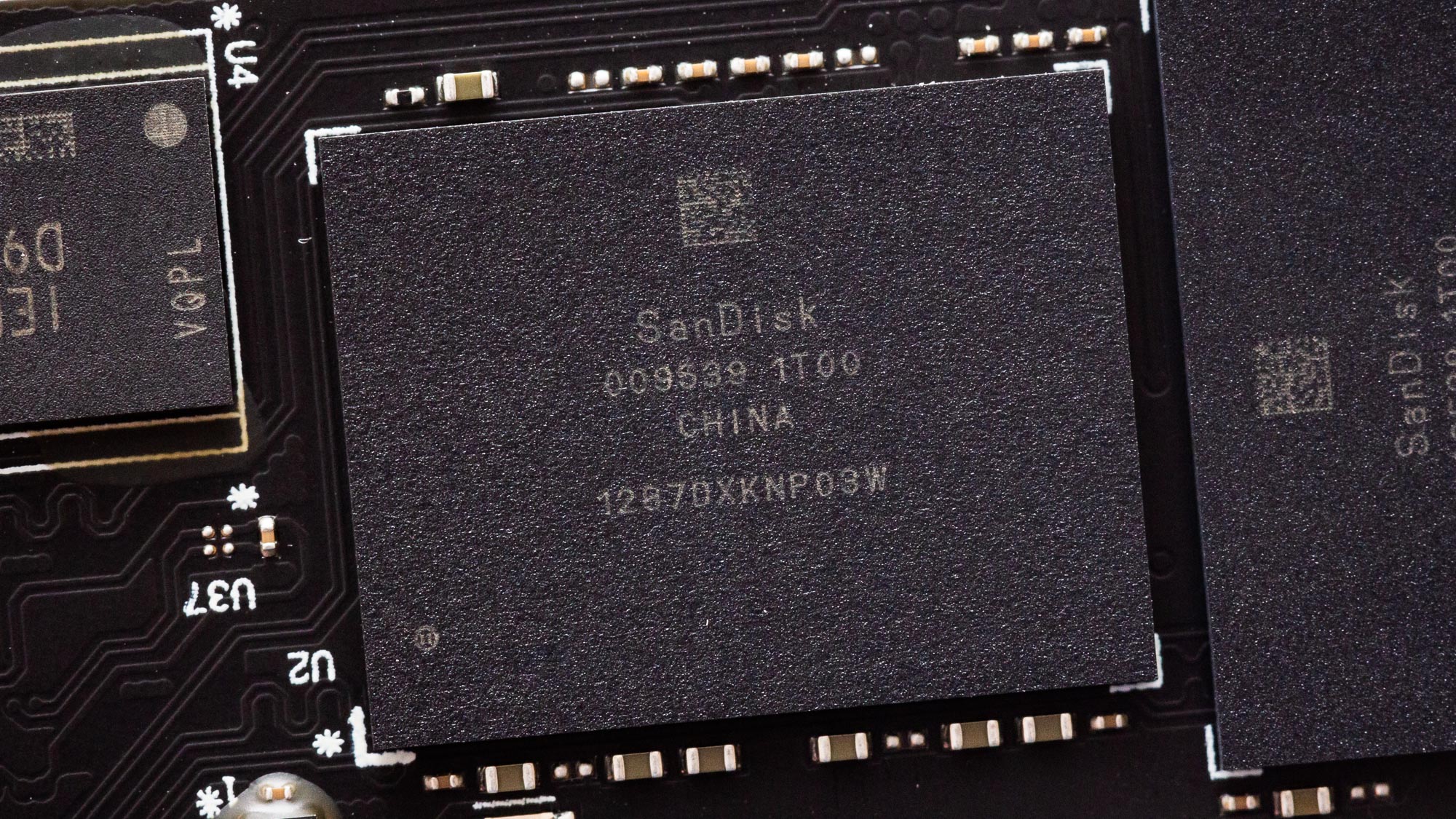Tom's Hardware Verdict
The WD Red SN700 is an unexciting PCIe 3.0 NVMe drive, but its lackluster performance is backed by consistency and solid performance in sustained workloads, making it attractive for NAS and even general users. This drive should be of interest to anyone at 4TB, but is particularly well-suited for small business NAS usage.
Pros
- +
+ High capacity options
- +
+ TLC-based
- +
+ Pricing
- +
+ Strong sustained performance
- +
+ Efficient
Cons
- -
Middling general performance
- -
Unexciting, old technology
- -
No power loss protection
Why you can trust Tom's Hardware
The WD Red SN700 promises up to 3400 MBps of bandwidth and peaks at 550,000 IOPS over a PCIe 3.0 interface. This isn't particularly exceptional in any way compared to general-use SSDs, but reflects its intended role as a drive for network-attached storage devices, or NAS. In addition, the drive is backed by a solid warranty, including up to 5100 TBW over five years (or 0.7 drive writes per day) and has an affordable 4TB option.
An SSD designed for NAS has different requirements than typical consumer drives because they are commonly used for caching. NAS data caching can encompass read or write data, or both, depending on the implementation. Naturally, some redundancy and preferably power loss protection are ideal if the drive is used for critical write data. WD also targets the Red SN700 at small- and medium-sized businesses, or SMBs, expanding its usage to application hosting, virtualization, and databases.
WD has a whole lineup of drives under the SN branding, borne from client and OEM drives, focusing on consistency and comprehensible market segmentation. We’ve reviewed their Blue and Black NVMe drives for entry-level and higher-end consumer markets, respectively, while Red is used for NAS drives. We’ve seen this also with their SATA SSD offerings - including Green for OEM and low-cost solutions, so this branding reflects WD's segmentation in the HDD market as well.
The WD Red SN700 is very similar to the older WD Black SN750 and its lineage of drives, utilizing a proprietary and powerful controller known for its consistency and efficiency. WD updated the flash to 96-Layer as found on the SN850 which, while not as new or robust as the 112-Layer BiCS5 on the Black SN770, is quite competitive. In addition, the Black SN750 was known for its consistent post-cache performance, a desirable attribute for many NAS workloads. That makes the Red SN700’s design a logical choice for use in a NAS.
Specifications
| Product | 250GB | 500GB | 1TB | 2TB | 4TB |
| Pricing | $64.99 | $79.99 | $144.99 | $249.99 | $479.99 |
| Capacity (User / Raw) | 250GB / 256GB | 500GB / 512GB | 1000GB / 1024GB | 2000GB / 2048GB | 4000GB / 4096GB |
| Form Factor | M.2 2280 | M.2 2280 | M.2 2280 | M.2 2280 | M.2 2280 |
| Interface / Protocol | PCIe 3.0 x4 / NVMe 1.3 | PCIe 3.0 x4 / NVMe 1.3 | PCIe 3.0 x4 / NVMe 1.3 | PCIe 3.0 x4 / NVMe 1.3 | PCIe 3.0 x4 / NVMe 1.3 |
| Controller | WD NVMe Architecture | WD NVMe Architecture | WD NVMe Architecture | WD NVMe Architecture | WD NVMe Architecture |
| DRAM | DDR4 | DDR4 | DDR4 | DDR4 | DDR4 |
| Memory | Kioxia BiCS4 96L TLC | Kioxia BiCS4 96L TLC | Kioxia BiCS4 96L TLC | Kioxia BiCS4 96L TLC | Kioxia BiCS4 96L TLC |
| Sequential Read | 3,100 MBps | 3,430 MBps | 3,430 MBps | 3,400 MBps | 3,400 MBps |
| Sequential Write | 1,600 MBps | 2,600 MBps | 3,000 MBps | 2,900 MBps | 3,100 MBps |
| Random Read | 220,000 IOPS | 420,000 IOPS | 515,000 IOPS | 480,000 IOPS | 520,000 IOPS |
| Random Write | 180,000 IOPS | 380,000 IOPS | 560,000 IOPS | 540,000 IOPS | 520,000 IOPS |
| Security | N/A | N/A | N/A | N/A | N/A |
| Endurance (TBW) | 500 TB | 1,000 TB | 2,000 TB | 2,500 TB | 5,100 TB |
| Part Number | WDS250G1R0C | WDS500G1R0C | WDS100T1R0C | WDS200T1R0C | WDS400T1R0C |
| Warranty | 5-Years | 5-Years | 5-Years | 5-Years | 5-Years |
The Red SN700 is rated for sequential speeds of up to 3.4/3.1 GBps read/write and up to 550,000/520,000 random read/write IOPS. The drive is available in 256GB, 512GB, 1TB, 2TB and 4TB capacities ranging from $0.12-$0.26 per gigabyte. Being a NAS drive, it’s oriented at larger capacities where the price per gigabyte is quite competitive, especially at 4TB — a capacity that can be difficult to find with affordable pricing and TLC flash. This makes it even more of a compelling choice for consumer use if someone needs this combination of price, performance and endurance.
The five-year warranty comes with 1PBW per TB of capacity up to and including the 1TB SKU, with 2.5PBW and 5.1PBW total for the 2TB and 4TB SKUs, respectively. This is more endurance than WD's consumer variants, but otherwise, the drive has normal operating conditions and features (for example, a 70C maximum operating temperature). Unfortunately, the SN700 lacks power loss protection which, while not surprising, reduces its effectiveness in scenarios requiring absolute reliability.
Software and Accessories
The Red SN700 supports the Western Digital Dashboard utility that allows for analysis and updates through a user-friendly GUI. The software gives you a full look at the drive’s status, lets you test performance, and has other tools and settings. For example, you can do firmware updates, run S.M.A.R.T. tests, TRIM optimization, and secure erase the drive. While these are standard features, many third-party drive manufacturers lack such support.
Get Tom's Hardware's best news and in-depth reviews, straight to your inbox.
A Closer Look
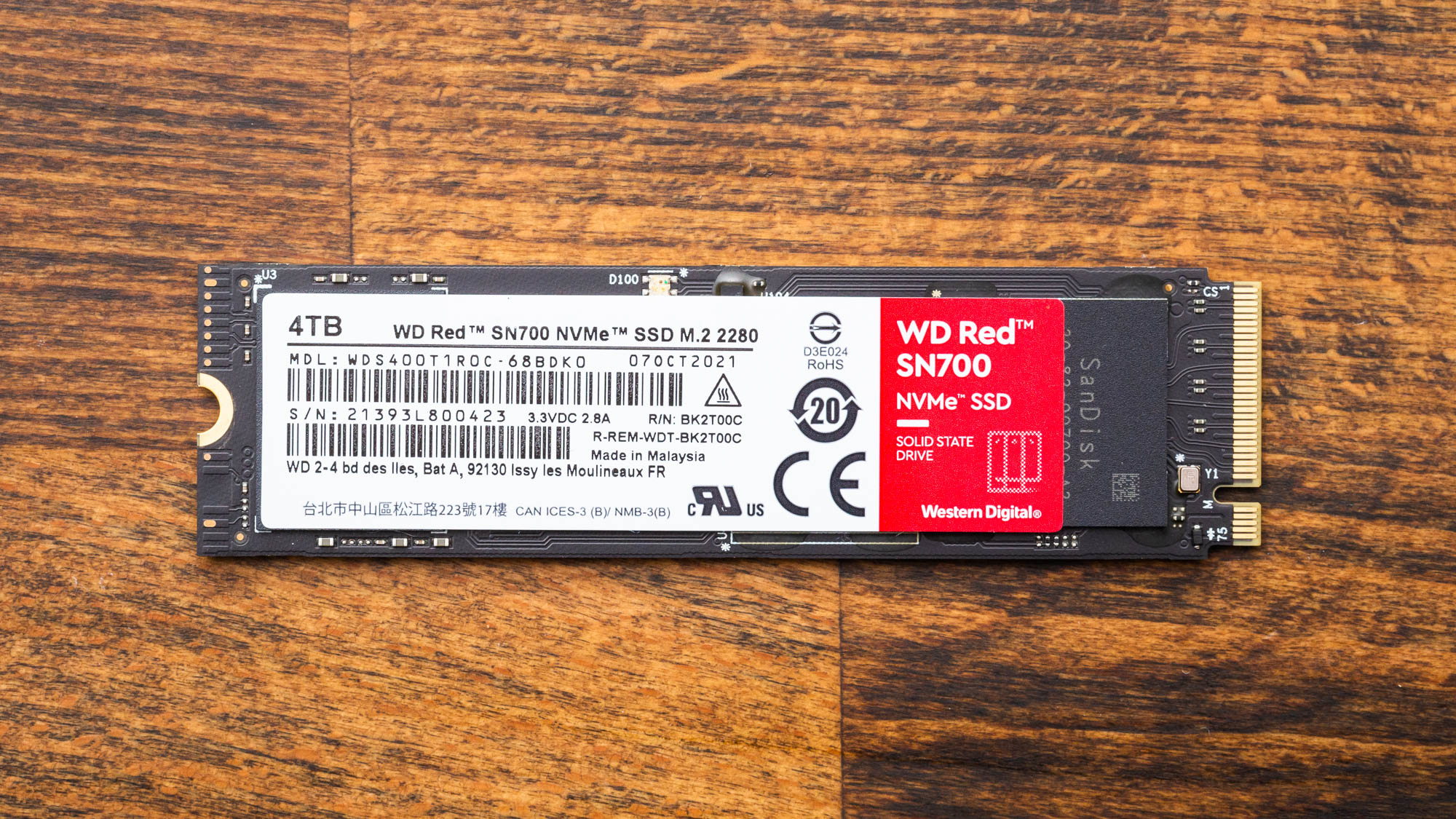
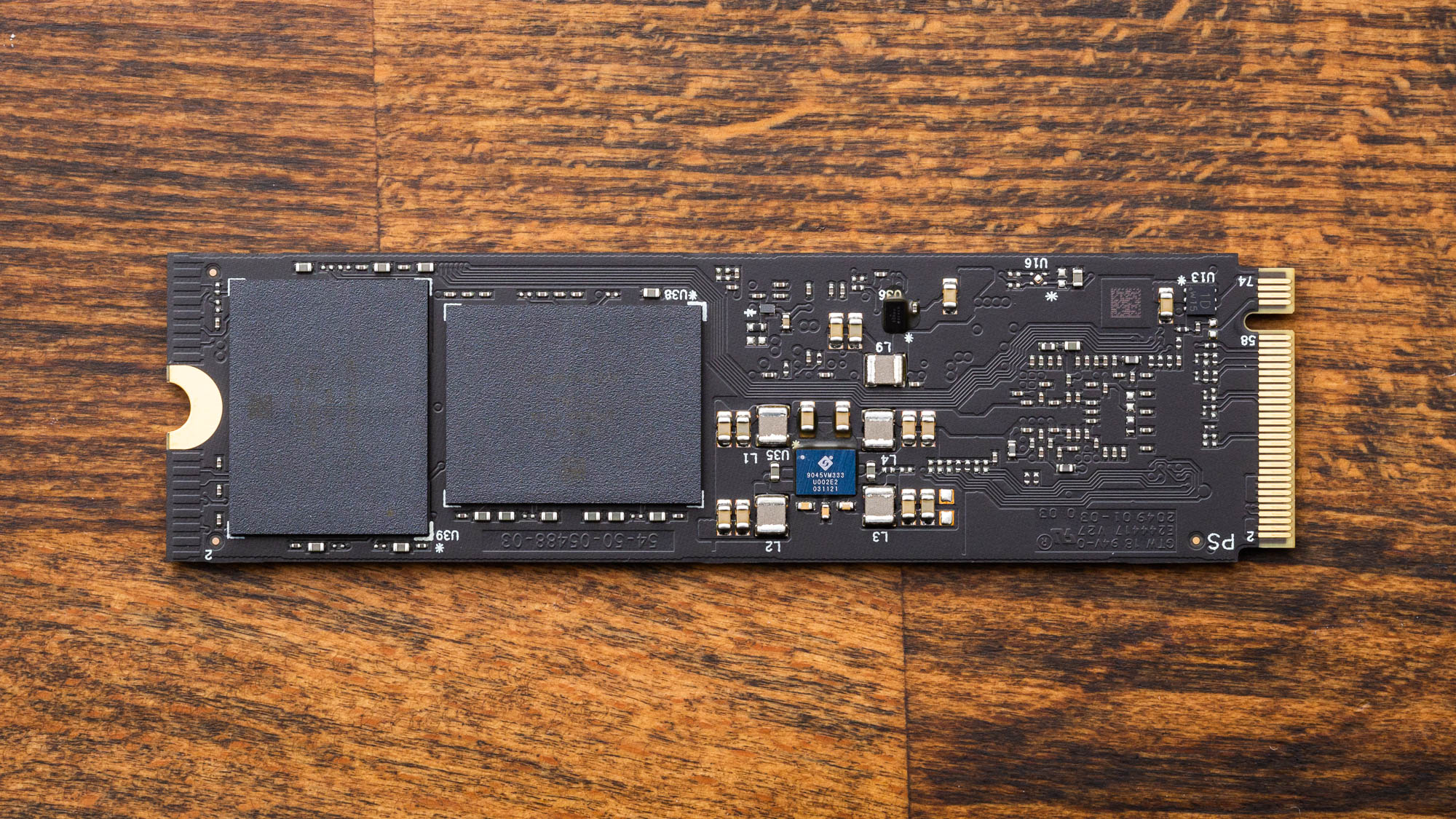
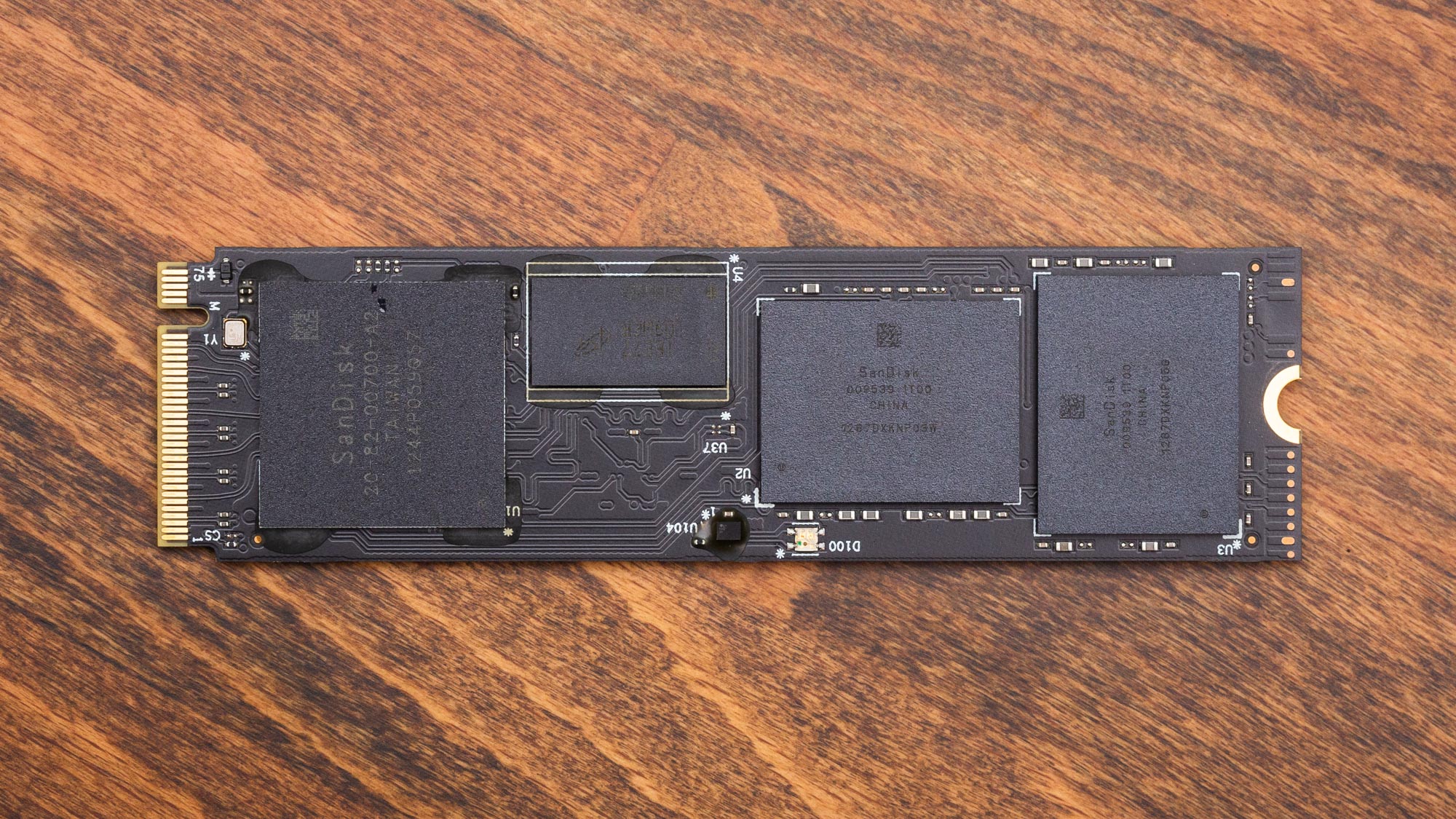
The Red SN700 comes in the M.2 2280 form factor and is necessarily double-sided at the 4TB capacity with four flash packages. The front side has a longer label with drive details, such as the date of manufacture and the serial number. The labeled side has two of the four flash packages but not a second DRAM module. We can also see what appears to be a power management integrated circuit (PMIC).
PMICs and other integrated circuits are currently in short supply and are used on other items like DDR5 modules to regulate voltage.
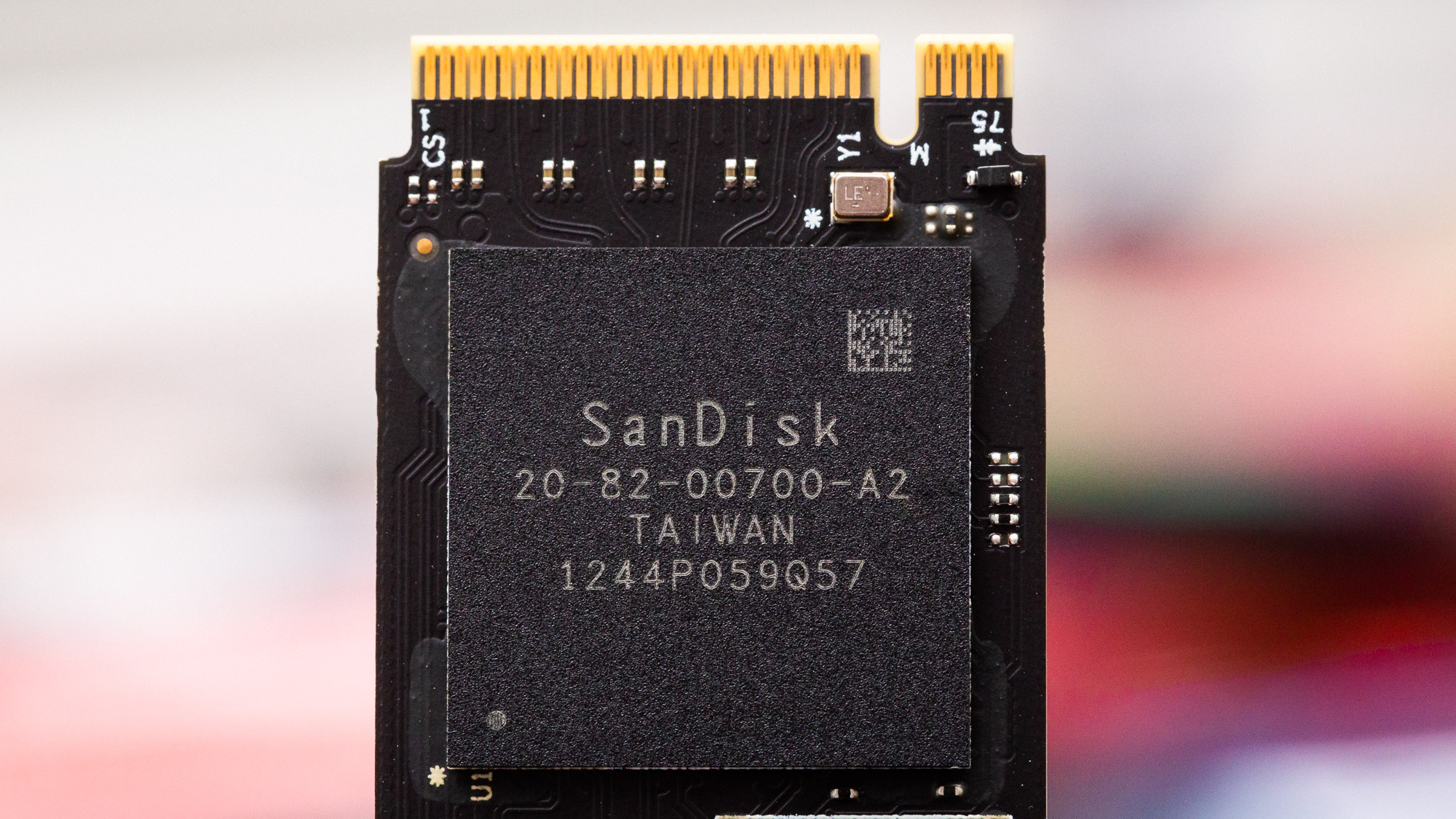
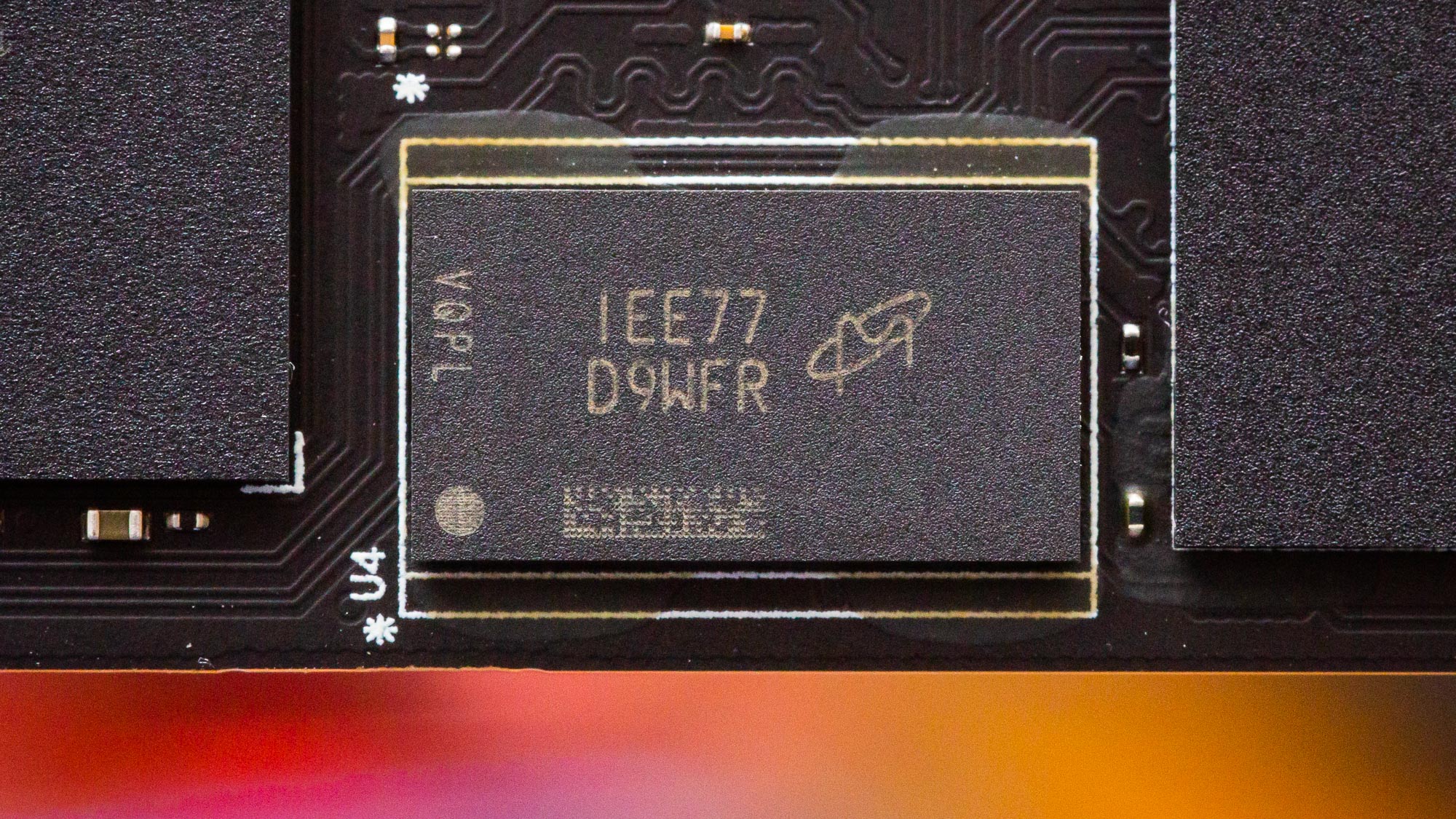
The controller appears to be a newer revision of the model used for the Black SN750. This likely reflects the update to 96-Layer BiCS4 flash. In fact, the SN730, an OEM variant of the Black with 96-Layer flash for use in WD’s AN1500, has this controller. The single DRAM module on the drive, utilized for metadata, is 16Gb or 2GB in capacity. This is half the normal ratio but should be more than ample even for heavier workloads.
DRAM is predominately used for metadata and mapping on consumer drives with a maximum requirement of 1GB per 1TB of flash to reflect the nature of 32-bit addressing for 4KB logical pages. It’s possible to compress this addressing for consecutive pages, for example, and it’s unlikely the drive will face a workload that would exhaust what’s available here.
Each of the four flash packages is 8Tb or 1TB, which pushes the limits of 96-Layer TLC. Typically this flash is 512Gb or 64GB per die, and a package can be up to 16DP (a sixteen-die package). That is, sixteen die on top of one another for a total capacity of 1TB. The 4TB SKU of the Red SN700 stands out as it is very capacious for a TLC-based drive of this generation.
There are various reasons a NAND package is limited in die count. There’s a maximum allowed height in the M.2 specification, for one, but there are other challenges such as signal integrity and potential issues with bonding. These problems can be prevented to some extent with redrivers and dummy dies used to mitigate warpage, etc. In any case, the Red SN700 is particularly attractive at its maximum capacity as it’s far more common to find TLC drives topping out at 2TB. This will change in the future, especially because 1Tb TLC dies are on the horizon.
BiCS, or bit cost scaling, is a type of charge trap flash (CTF) that differs from the floating gate and replacement gate, or gate-last, architectures of other flashes. Intel notably uses floating gate to improve endurance on their QLC, while forms of replacement gate are utilized by Samsung’s V-NAND and Micron’s 128-layer and up flash. Differences aside, BiCS, as its namesake implies, is designed to scale for capacity, although not much has been seen from it with QLC.
MORE: Best SSDs
MORE: How We Test HDDs And SSDs
MORE: All SSD Content

Shane Downing is a Freelance Reviewer for Tom’s Hardware US, covering consumer storage hardware.
-
escksu I would say the performance is pretty good. "incredible" Performance of those PCIE-4.0 drives are mostly on synthetic benchmarks only, mainly on sequential read/write.Reply -
drajitsh This is a reality interesting drive for the consumer market/price.Reply
But you have not written about the tcg support
